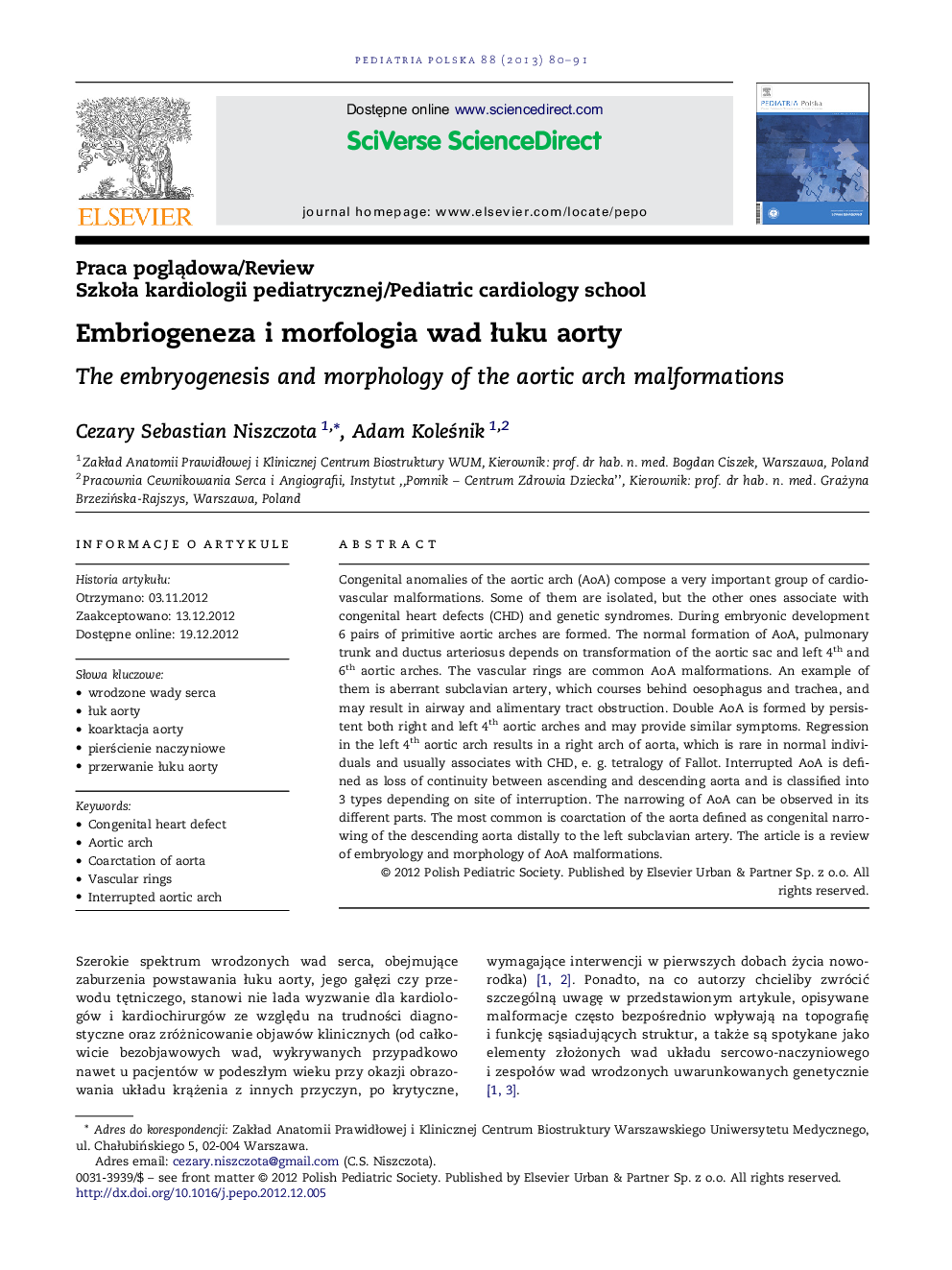| Article ID | Journal | Published Year | Pages | File Type |
|---|---|---|---|---|
| 10163134 | Pediatria Polska | 2013 | 12 Pages |
Abstract
Congenital anomalies of the aortic arch (AoA) compose a very important group of cardiovascular malformations. Some of them are isolated, but the other ones associate with congenital heart defects (CHD) and genetic syndromes. During embryonic development 6 pairs of primitive aortic arches are formed. The normal formation of AoA, pulmonary trunk and ductus arteriosus depends on transformation of the aortic sac and left 4th and 6th aortic arches. The vascular rings are common AoA malformations. An example of them is aberrant subclavian artery, which courses behind oesophagus and trachea, and may result in airway and alimentary tract obstruction. Double AoA is formed by persistent both right and left 4th aortic arches and may provide similar symptoms. Regression in the left 4th aortic arch results in a right arch of aorta, which is rare in normal individuals and usually associates with CHD, e. g. tetralogy of Fallot. Interrupted AoA is defined as loss of continuity between ascending and descending aorta and is classified into 3 types depending on site of interruption. The narrowing of AoA can be observed in its different parts. The most common is coarctation of the aorta defined as congenital narrowing of the descending aorta distally to the left subclavian artery. The article is a review of embryology and morphology of AoA malformations.
Keywords
Related Topics
Health Sciences
Medicine and Dentistry
Dermatology
Authors
Cezary Sebastian Niszczota, Adam KoleÅnik,
